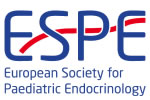hrp0092p1-15 | Bone, Growth Plate and Mineral Metabolism | ESPE2019
The Overweight and Obesity Decrease the Growth Potential in Mexican Children and Adolescents
Miranda-Lora América Liliana , Espinosa-Espíndola Montserrat , López-González Desireé , Loyo Mariana-Sánchez-Curiel , Dies Pilar , Klünder-Klünder Miguel
hrp0092p1-42 | Fat, Metabolism and Obesity | ESPE2019
De-novo and Depot-Specific Androgen Production in Human Adipose Tissue - a Source of Hyperandrogenism in Obese Females
Wagner Isabel Viola , Sahlin Lena , Kulle Alexandra , Klöting Nora , Döbeln Viola , Savchuk Iuliia , Dötsch Jörg , Söder Olle



